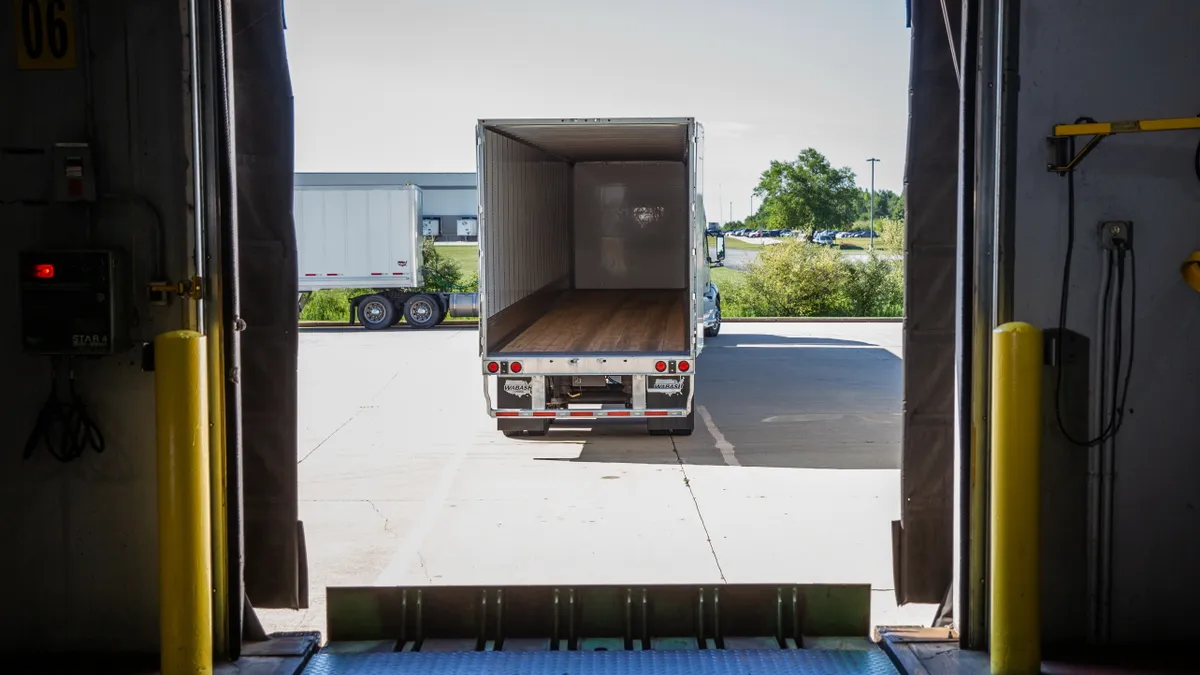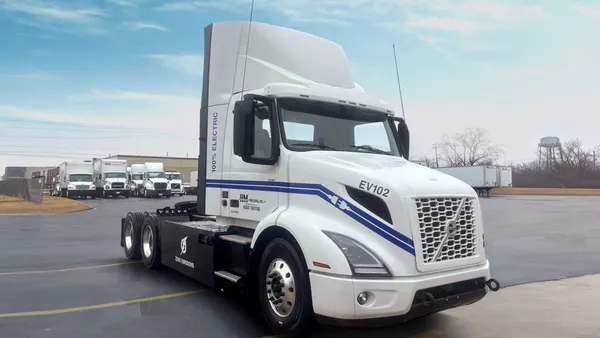Dive Brief:
- Wabash removed some overtime capacity as demand declined, executives said last month on an earnings call.
- The OEM deliberately chose to slow production at its main trailer facility, CFO Mike Pettit told investors, shipping 11,825 trailers in Q2. That’s a decline from quarterly shipments of 13,670 in 2022 and an increase from 2021 of 11,090.
- “We have maintained all full-time production employees in order to ensure our ability to respond to the potential for a near-term demand improvement,” Pettit said.
Dive Insight:
ACT and FTR outlooks suggest a challenging 2024 for trailer production.
Currently for 2023, total U.S. trailer production could reach 310,000–322,000 units, according to the analytics firms’ forecasts cited in a quarterly Wabash report. That range is expected to dip to 243,000–273,000 trailers in 2024.
Those projections come as monthly trailer orders have declined sequentially and YoY for most of this year. But the harsh climate appears to have some positive signs.
“July’s preliminary data show cancellations, although still higher than desired, moderated after three months of broadly-based elevated cancellations.” ACT Research’s Jennifer McNealy said in a report last week. “Backlogs remain healthy, if falling below year-ago levels for the first time this year in June. Demand may be softening, but it’s far from falling off a cliff.”
Going forward, Wabash expects that its offerings will become more sought after with factors such as U.S. manufacturing facilities driving construction. Wabash CEO and President Brent Yeagy suggested ACT and FTR didn’t fully incorporate that change and others for future trailer demand in coming years.
“We’re going to move right back into a point of scarcity, where demand will exceed supply moving into 2025,” Yeagy said on the earnings call.
Clarification: This story has been updated to reflect Wabash's brand name.













